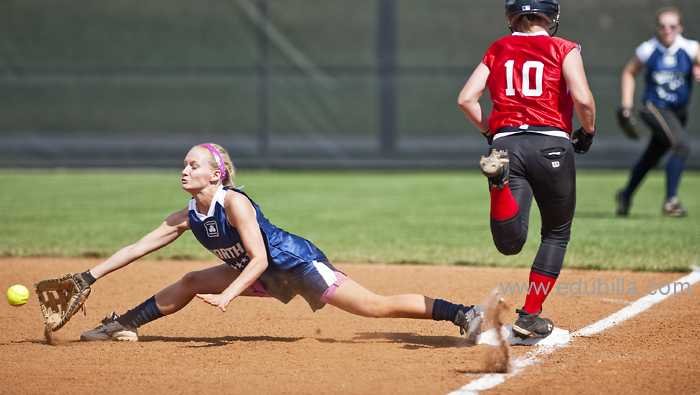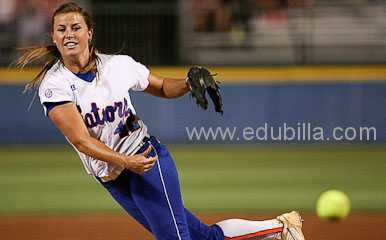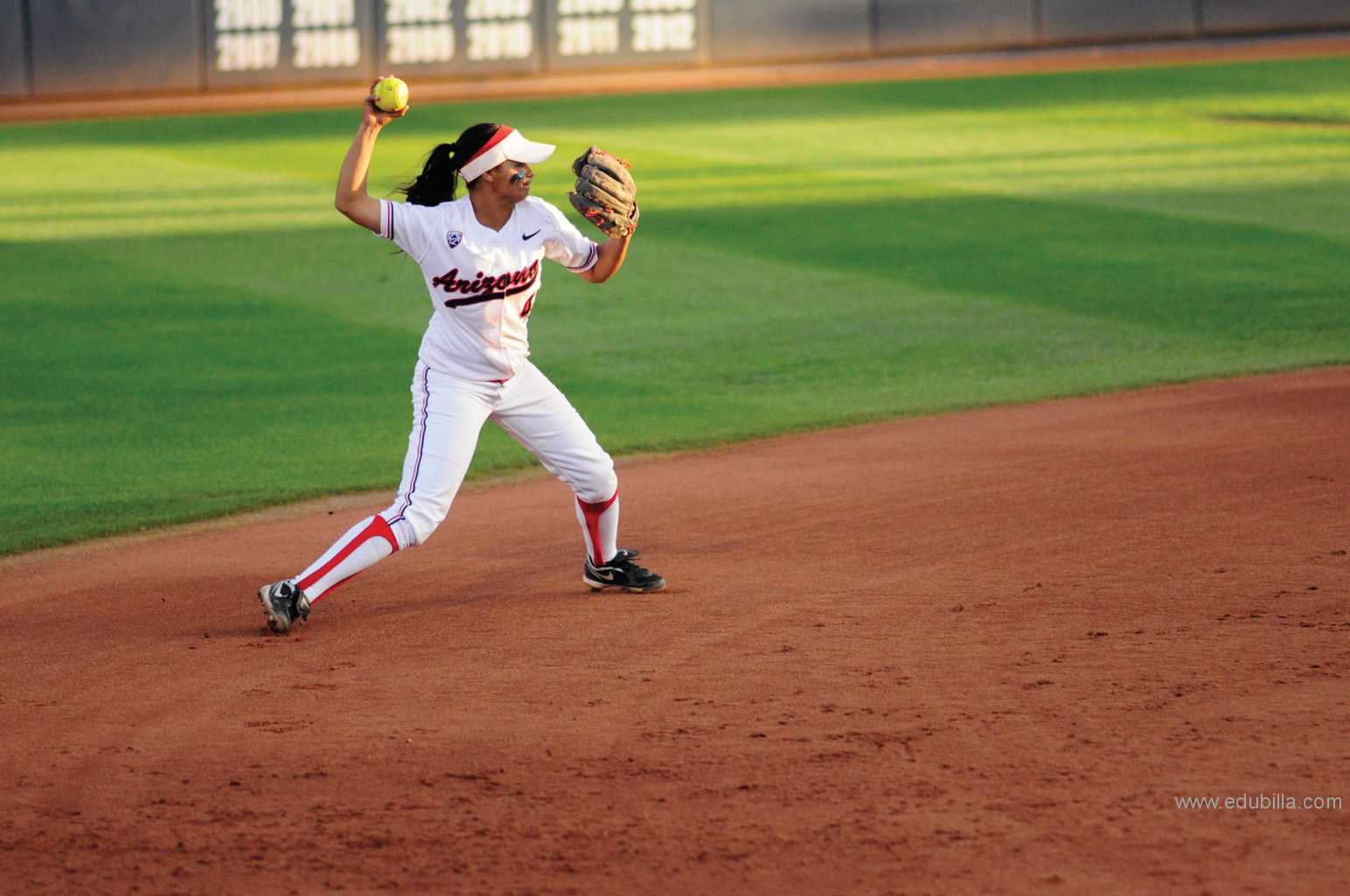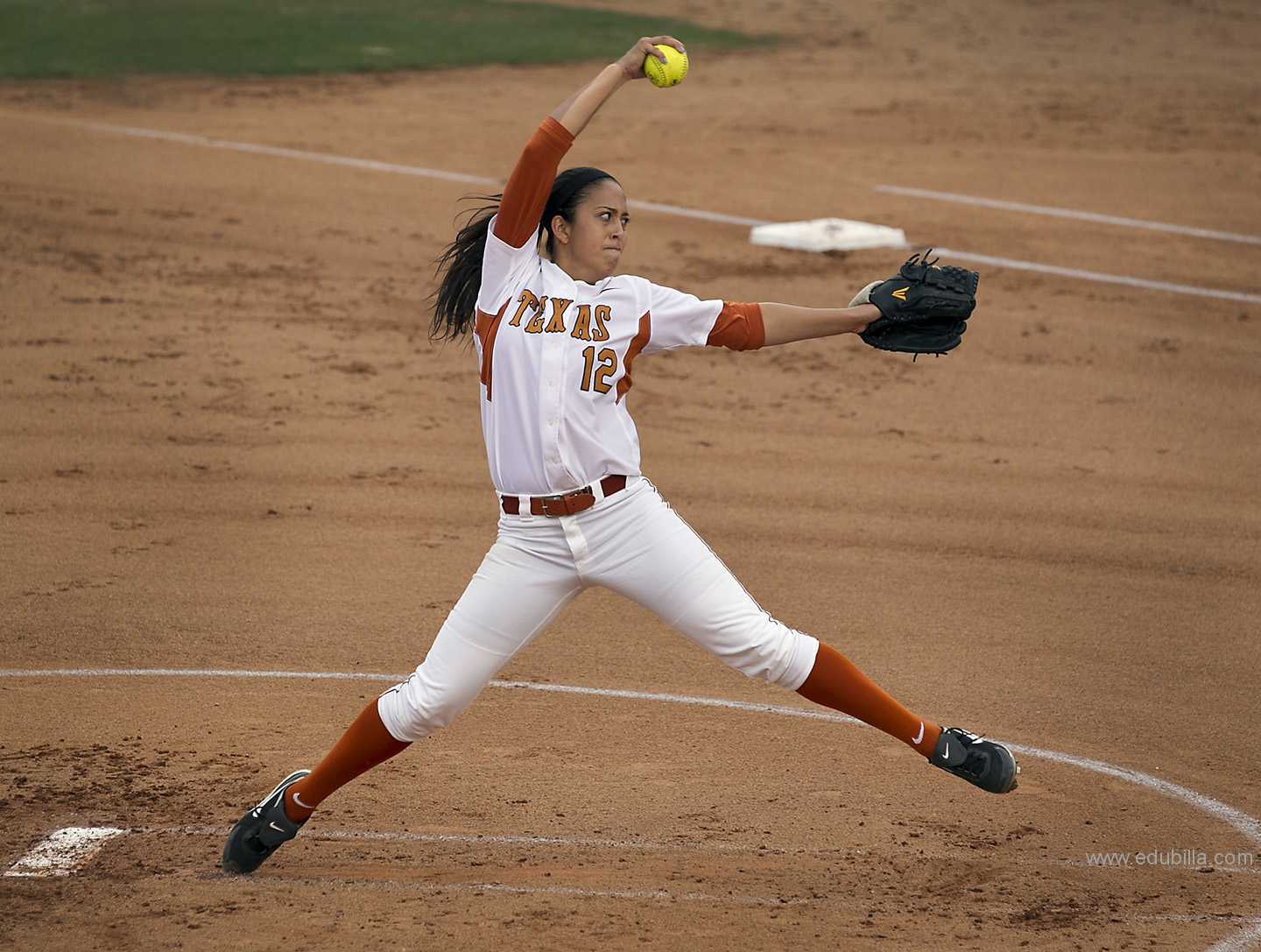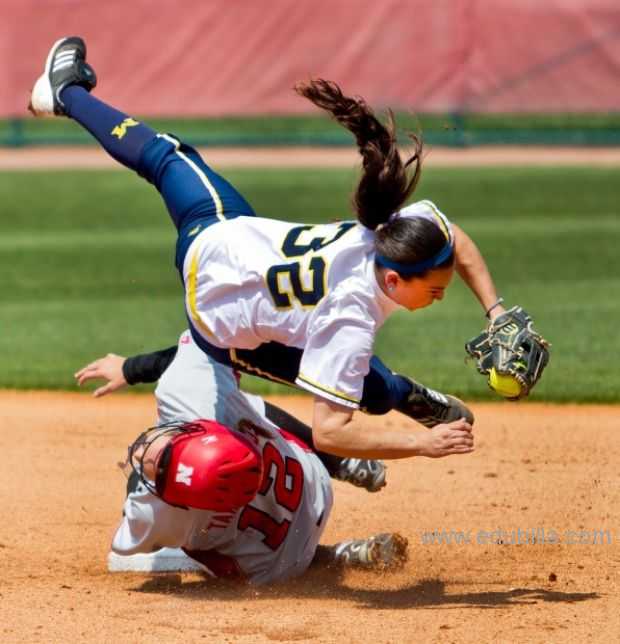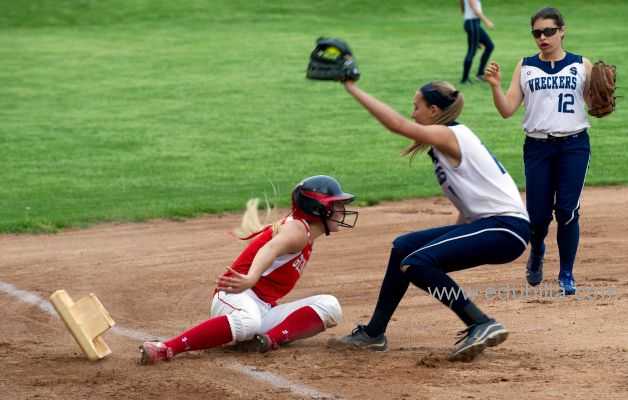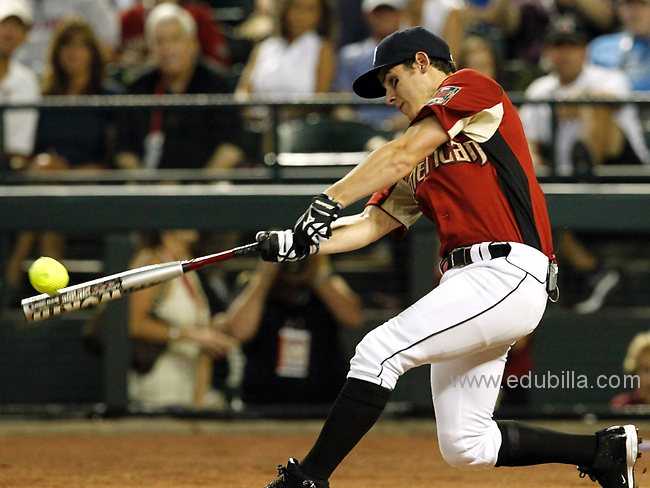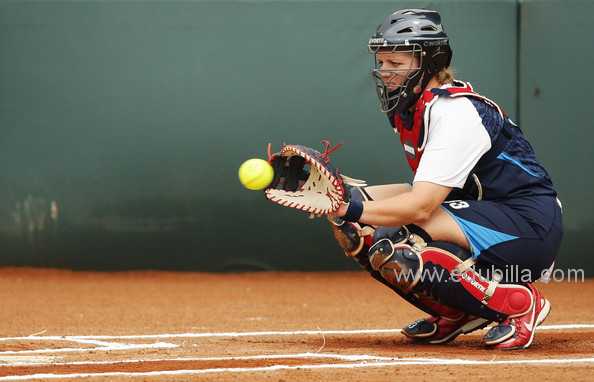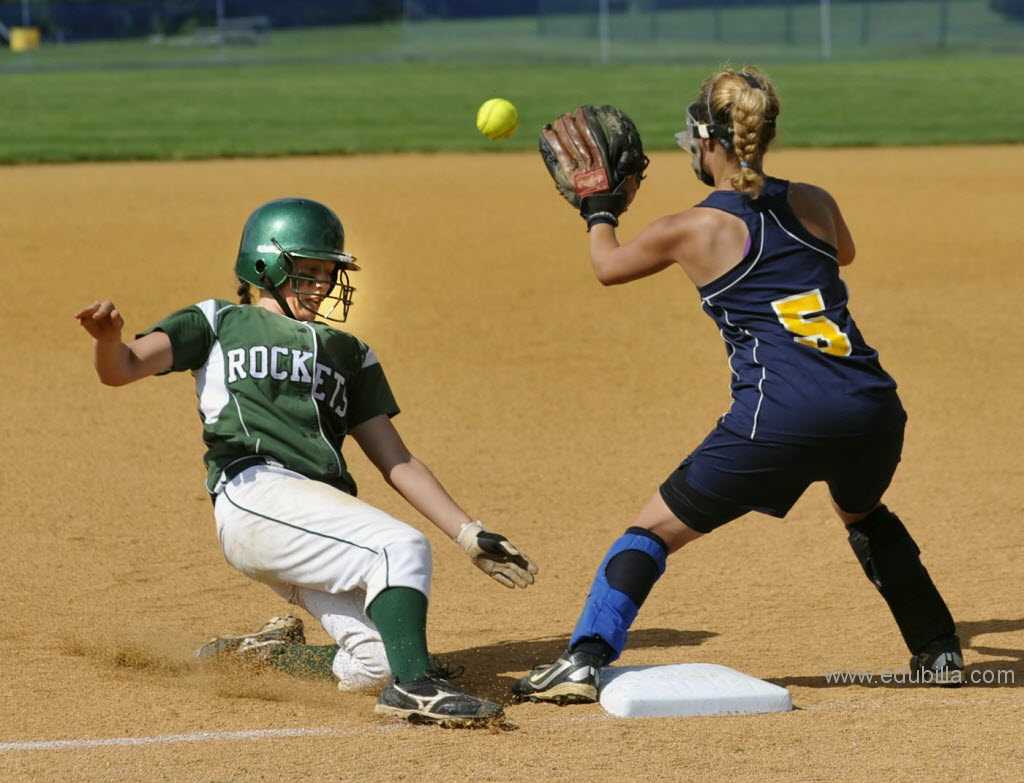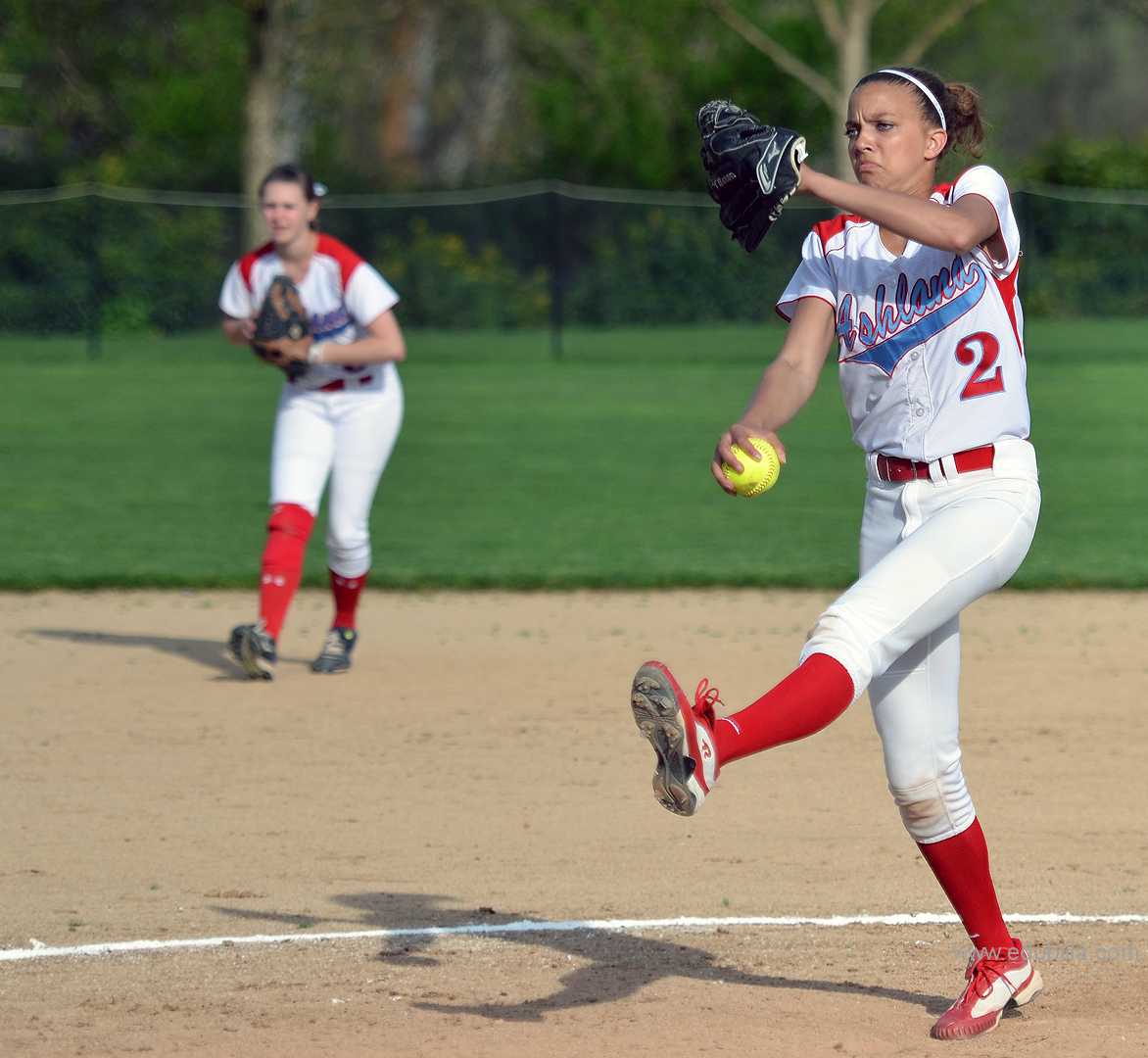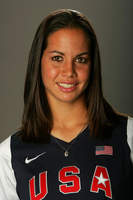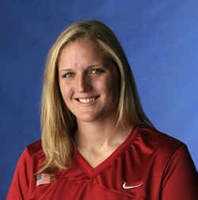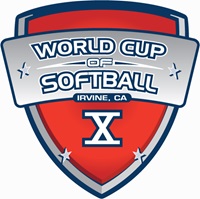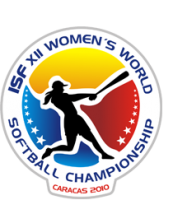
Overview Of Softball
Softball is a variant of baseball played with a larger ball on a smaller field. It was invented in 1887 in Chicago as an indoor game. It was at various times called indoor baseball, mush ball, playground, softbund ball, kitten ball, and, because it was also played by women, ladies' baseball. The name softball was given to the game in 1926. A tournament held in 1933 at the Chicago World's Fair spurred interest in the game. The Amateur Softball Association of America (founded 1933) governs the game in the United States and sponsors annual sectional and World Series championships. The World Baseball Softball Confederation (WBSC) regulates rules of play in more than 110 countries, including the United States and Canada; before the WBSC was formed in 2013, the International Softball Federation filled this role. Women's fast-pitch softball became a Summer Olympic sport in 1996, but it (and baseball) were dropped in 2005 from the 2012 games.
There are two types of softball. In the most common type, slow-pitch softball, the ball, sometimes larger than the standard 12 inches, must arch on its path to the batter, there are 10 players in a team, and bunting and stealing are prohibited. In fastpitch softball, the pitch is fast, there are nine players on the field at one time, and bunting and stealing are permitted. Softball rules vary somewhat from those of baseball. Two major differences are that the ball must be pitched underhand—from 46 ft. (14 m) for men or 43 ft(13.1 m)for women as compared with 60.5 ft. (18.4 m) in baseball—and that seven innings instead of nine constitute a regulation game.
Despite the name, the ball used in softball is not very soft. It is about 12 in. (30.5 cm) in circumference (11 or 12 in. for slow-pitch), which is 3 in. (8 cm) larger than a baseball. The infield in softball is smaller than on a baseball diamond; each base is 60 ft (18 m) from the next, as opposed to baseball's 90 ft. (27 m).
Game Rules
OBJECT OF THE GAME:
To score more runs than the opposing team. The team with the most runs at the end of the game wins.
EQUIPMENT:
Equipment differs for offensive and defensive positions.
· On offense, batters have a wooden or aluminum bat, batting gloves for grip, and batting helmets for protection.
· On defense, fielders use a leather glove. The catcher has special protective equipment, including a face mask, chest protector, and shin/leg guards.
All players wear shoes with cleats. The uniform consists of a jersey; pants, shorts, or skirt; and a baseball cap, visor, or headband.
MAJOR DIFFERENCES FROM BASEBALL:
Fast pitch softball is similar to baseball; however, there are notable differences.
· For example, the pitch is delivered underhand, the ball is larger, the field is smaller, and base runners cannot leave a base until the pitcher releases the pitch.
THE GAME:
1) There are 9 players on a softball team.
2) The playing field is divided into the infield and outfield
3) The lines between the bases are 60’ apart and when joined they form a “diamond”,inside the baseline is known as the infield
4) Outside the baseline but inside the playing field is called the outfield.Any ball going outside the 1st or 3rd base line is a foul ball ( runners can not advance and the batter gets another try unless the ball was caught in the air, which translates to an out)An official game is 7 innings (a inning is when both teams have had their turn to bat)
a) The visiting team bats in the first half of each inning, called the “top of the inning;” the home team bats in the second half of each inning, called the “bottom of the inning.”
There is no set time that an inning lasts; each half of the inning continues until the defense accumulates three outs. If the game is tied after the last inning, the game goes into “extra innings,” and continues until one team holds a lead at the end of an inning.
PITCHING:
1) The pitcher must have both feet on the pitcher’s rubber and can only take one step forward while pitching.
2) The ball must be thrown underhand.
3) Both hands must be on the ball at the start of the pitch.
BATTING:
1) Batters must follow the same order throughout the whole game
2) The batter is out if and when:
a) three strikes have been called
b) a fly ball is caught
c) the batter does not stand in the batter’s box
BASE RUNNING:
1) Runners must touch each base in order
2) Runners may overrun 1st base only, all other bases the runner may be tagged and called out if they are off the base.
3) Runners can not lead off a base, they must be on base until the ball as left the pitcher’s hand
4) After a fly ball has been caught the base runner must tag the occupied base before
5) advancing to the next base
6) One base runner can not pass another base runner that is ahead of them
7) Stealing a base is not permitted
8) A runner is out if:
a) they are tagged with the ball before reaching a base
b) the ball gets to 1st base before the runner
c) they run more than 3 feet out of the base line to avoid being tagged
TERMS:
1) Ball: a legally pitched ball that does not enter the strike zone (four balls equals a walk)
2) Grounder: A ball that is hit on the ground
3) Force out: when the runner has to advance to the next base to make room for the following base runner.
4) Fly ball: ball hit up in the air to the outfield
5) On deck: the next batter
6) Pop up: ball hit up in the air to the infield
7) Strike: term used when a ball is swung at and missed or is called when the ball enters the strike zone and is not swung at all.
8) Strike zone: the ball passes the batter over the plate between their chest and knees
9) Infield: The infield is that portion of the field in fair territory which includes areas normally covered by infielders
10) Outfield: The part of the field beyond the diamond, or infield. It is occupied by the fielders and it is farthest from the batsman.
11) Foul Lines: Two lines (first and third base line) that distinguish fair territory from foul territory
12) Fair Territory: Fair territory is that part of the playing field within and including the first and third base foul lines from home plate to the extreme playing field fence and perpendicularly upward.
13) Batter’s Box: Box marked with chalk near home plate that a batter must stay within while batting.
14) Bases: Home plate is one corner of a diamond with bases at each corner. The bases other than home plate are 15 in (38 cm) square, of canvas or a similar material, and not more than 5 in (13 cm) thick. The bases are numbered counter clockwise as first base, second base, and third base
15) Pitcher’s Mound: Located near the center of the diamond it is the spot from where
the pitcher throws the ball.
16) Foul Poles: Poles stationed at the end of each foul line to distinguish fair territoryfrom foul territory.
17) Double play: A play in which the defense records two outs.
18) Triple Play: A play during which the defense records three outs.
19) Tag Out: A base runner that is not on a base when she or he is tagged by a player with the ball. The defense must create three "outs" before it can switch to defense. Outs can be by strike out, force out, fly out or tag out.
20) Hit: A batted ball that allows a batter to safely reach base.
21) Home Run: Fair ball hit over the outfield fence between the two foul poles.
22) Run: An offensive player safely tags home plate.
23) Strike Out: Occurs during an at-bat when a batter accumulates three strikes, at which
point the at-bat ends and the player is called out.
24) Umpires make the decisions about play in a softball game. The number of umpires in a game can range from a minimum of one to a maximum of seven. There is never more than one "plate umpire"; there can be up to three "base umpires", and up to a further three umpires positioned in the outfield. Most games use a crew of two umpires (one plate umpire, one base umpire). The umpire's decisions are usually indicated by both the use of hand signals, and by vocalizing the call.
25) Safe: Called when a base runner reaches a base without getting tagged out or avoids a force out.
26) Walk: Player advances to 1st base when 4 consecutive pitches were called as balls.
27) Hit and run: Base runner advances to the next base when the pitch is released, knowing that the batter is swinging at the pitch.
28) Line drive: Ball hit with a trajectory almost parallel to the ground.
29) Sacrifice: A batter strategically hits the ball into an out situation to advance or score a runner. Usually a “sacrifice bunt” or “sacrifice fly.”
PLAYING POSITIONS:
Outfielders (CF, RF, and LF): Positioned beyond the infield, they catch and field “fly balls,” line drives, and ground balls hit into the outfield. Rover (or Buck Short): plays 10-20 feet outside the infield on the "pull" side of the hitter. For example, a deep short stop for a right handed batter Second Basemen (2B): Plays in the gap between the bag at second and the first baseman.
Receives throws from fielders attempting to make outs at 2nd base and fields “grounders” and “pop ups” hit to this side of the infield.
Short Stop (SS): Fields the balls hit to the infield between second and third base. She orHe covers second base (along with the second baseman) and is often involved in force
plays and “double plays” with the second baseman.
Pitcher (P): Throws the softball from the center of the diamond (pitcher's mound) to the catcher. The pitcher uses an underarm motion to pitch the ball toward the "strike zone".
After making a pitch, the pitcher gets ready to field balls hit up the middle.Third Basemen (3B): Plays to the left of third base and covers any plays there. Receives throws from other fielders attempting to make outs at 3rd base.
First Basemen (1B): Positioned just to the left of the first base. Their main role is to make fielding plays on balls hit toward first base.
Catcher (C): Plays in a semi-crouched position behind home plate and receives pitches thrown by the pitcher. Also receives throws from fielders attempting to make outs at home plate.
Equipments Need For Softball
Ball:
Despite the sport's name, softballs are not especially soft. The size of the ball varies according to the classification of play; the permitted circumferences in international play are 12±0.125 in (30.5±0.3 cm), in weight between 6.25 oz (178 g) and 7.0 oz (198.4 g) in fast pitch; 11±0.125 in (29.7±0.3 cm), weight between 5.875 oz (166.5 g) and 6.125 oz (173.6 g) in slow pitch. For comparison, under the current rules of Major League Baseball, a baseball weighs between 5 and 5 1/4 ounces (142 and 149 g), and is 9 to 9 1/4 inches (229–235 mm) in circumference (2 7/8–3 in or 73–76 mm in diameter). A 12-inch circumference ball is generally used in slow pitch, although in rare cases some leagues (especially recreational leagues) do use a 14-inch circumference ball. Some balls have a raised seam, and others do not. The ball is most often covered in white or yellow leather in two pieces roughly the shape of a figure-8 and sewn together with red thread, although other coverings are permitted. The core of the ball may be made of long fiber kapok, or a mixture of cork and rubber, or a polyurethane mixture, or another approved material
Bat:
The bat used by the batter can be made of wood, aluminum, or composite materials such as carbon fiber. Sizes may vary but they may be no more than 34 inches (86 cm) long, 2.25 inches (6 cm) in diameter, or 38 oz. (1.2 kilograms) in weight.The standard bat barrel diameter for both slowpitch and fastpitch softball is 21/4 inches. Many players prefer a smaller barrel, which reduces weight and allows higher swing speed.Although there are a variety of bats used, there are several that are banned due to performance enhancement.These bats are determined to be illegal by the Amateur Softball Association of America (ASA). Several bats are banned because of the harm it may place upon other teams and or give them an unfair advantage.
Gloves:
All defensive players wear fielding gloves, made of leather or similar material. Gloves have webbing between the thumb and forefinger, known as the "pocket". The first baseman and the catcher may wear mitts; mitts are distinguished from gloves in that they have extra padding, and no fingers. No part of the glove is allowed to be the same color as that of the ball, including that of its seams.Gloves used in softball are usually larger than the ones used in baseball. No glove larger than 14" (36 cm) can be used in ASA sanctioned play.
Uniform:
Each team wears a distinctive uniform. The uniform includes a cap or visor, a shirt (usually sleeveless), tight sliding undershorts (these are optional), socks, and pants; these are the components for which standards are set.
Caps, visors, and headbands are optional for female players, and sometimes have to be the same color. Caps are mandatory for male players. A fielder who chooses to wear a helmet (see below) is not required to wear a cap.
Many female players use "sliding shorts", otherwise known as compression shorts in other sports. These shorts help to protect the upper thigh when sliding into a base. "Sliders" may also be worn for similar protection. These are somewhat padded shinguards that extend usually from the ankle to the knee of the wearer and wrap all the way around the leg(s). They protect the shin, calf, etc. from getting bruised or damaged while sliding into homeplate and make it much more comfortable to slide into the plate. Most male players use long, baseball-style pants.
At the back of the uniform, an Arabic numeral from numbers 0 through 99 must be visible. Numbers such as 02 and 2 are considered identical. Also, on the back of the uniforms players' names are optional.
Protective equipment:
A helmet must have two ear flaps, one on each side. Helmets and cages that are damaged or altered are forbidden. Helmets must be worn by batters and runners in fastpitch. Helmets are optional in slowpitch. In NCAA fastpitch softball you have the option to wear a helmet with or without a face mask. Most female travel ball teams for fast pitch softball require the batter to wear a helmet with a face mask. In male fastpitch masks are generally only used for medical reasons. In fast pitch, the catcher must wear a protective helmet with a face-mask and throat protector, shin guards and body protector. Shin guards also protect the kneecap.
History Of Softball
The earliest known softball game was played in Chicago, Illinois on Thanksgiving Day, 1887. It took place at the Farragut Boat Club at a gathering to hear the outcome of the Yale University and Harvard University football game.When the score was announced and bets were settled, a Yale alumnus threw a boxing glove at a Harvard supporter. The other person grabbed a stick and swung at it. George Hancock called out "Play ball!" and the game began, with the boxing glove tightened into a ball, a broom handle serving as a bat. This first contest ended with a score of 41-40.The ball, being soft, was fielded barehanded.
George Hancock is credited as the game's inventor for his development of ball and an undersized bat in the next week. The Farragut Club soon set rules for the game, which spread quickly to outsiders. Envisioned as a way for baseball players to maintain their skills during the winter, the sport was called "Indoor Baseball".Under the name of "Indoor-Outdoor", the game moved outside in the next year, and the first rules were published in 1889.
The First World Championship:
The first world championship in international play took place in 1965, when women's teams from five countries competed in Australia. One year later, the first Men's World Championship would be played (in Mexico). World (fast pitch) championships for junior men and junior women were first played in 1981, and a Men's World Slow Pitch Championship debuted in 1987.
Softball Timeline:
November 1887-THE FIRST GAME:
The first game wasn't even supposed to happen. There was about 20 men and they were there to watch a football game (Yale and Harvard). After Yale won someone picked up a boxing glove and threw it at someone, who then hit it with a pole. George Hancock then tied the glove together (so it resembled a ball) and drew a diamond on the gym floor, then broke off a broom handle. Thus beginning softball.
Jun 1895 - May 2014-WHEN WOMEN STARTED PLAYING:
The first women's softball team was formed in 1895 at Chicago's West Division High School. They did not obtain a coach for competitive play until 1899.
1896 to 1906-THE FIRST SOFTBALL LEAGUE:
Rober's post from 1896 to 1906, was listed on the National Register of Historic Places in part for its association with the sport's development.
The first softball league outside the United States was organized in Toronto in 1897.
Jun 1895 - Jul 1955-FIRST UNIFORMS:
The first softball uniform was not shorts and a t-shirt, it was a dress. Women would put on their dress, grab a pair of shoes and their hat, then go play. Finally in 1955 the uniform changed to pants/shorts and a t-shirt.
CloseMar 1967 - May 2014-SOFTBALL POSITIONS:
There are nine players out on a field. 1. Pitcher 2. Catcher 3. First Basemen 4. Second Basemen 5. Third Basemen 6. Shortstop 7. Left-field 8. Center-field 9. Right-field
CloseJun 1996 - Jul 2008-FIRST OLYMPIC TEAM:
The first Olympic softball team competed in the 1996 summer Olympics, and we won! Unfortunately Softball is no longer in the Olympics.
May 2014-SOFTBALL TODAY:
Softball has transformed a lot since the first game and it will probably continue to change. Softball is becoming a popular sport and many people play it, including me. I love softball and hope to play it until I cannot continue.
1991-Women's Fast-Pitch Softball:
In 1991, women's fast-pitch softball was selected to debut as a medal sport at the 1996 Olympic Summer Games in Atlanta, Georgia.
2001- World Cup:
In 2001 a World Cup competition was introduced for 16-and-under girls from the United States and around the world.
1951-The First National Softball:
In 1951, the first National Softball Week was declared (for July 22-28). That same year, the first licensed female umpire was hired in organized softball. She was 25-year old Madeline Lorton from the Bronx in the state of New York.
Origin Of Softball
Softball is a variant of baseball played with a larger ball on a smaller field. It was invented in 1887 in Chicago as an indoor game.
Softball Name:
The name "softball" dates back to 1926. The name was coined by Walter Hakanson of the YMCA at a meeting of the National Recreation Congress.(In addition to "indoor baseball", "kitten ball", and "diamond ball", names for the game included "mush ball", and "pumpkin ball".) The name softball had spread across the United States by 1930.By the 1930s, similar sports with different rules and names were being played all over the United States and Canada. The formation of the Joint Rules Committee on Softball in 1934 standardized the rules and naming throughout the United States.
The First Softball Game:
In 1887, a group of twenty young men had gathered in the Farragut Boat Club gym in order to hear the Harvard-Yale football game. After Yale’s victory, a man picked up a stray boxing glove and threw it at someone, who hit it with a pole. George Hancock, considered to be the inventor of softball tied the boxing glove so that it resembled a ball, chalked out a diamond on the floor, which gave it small dimensions than a regular baseball field to be able to fit in the gym, and broke off a broom handle to serve as a bat. Thus, a new version of baseball was born: softball.
The first softball league outside the United States was organized in Toronto in 1897.
The History of Softball Bats:
Softball is a team sport that is a younger relative of baseball. Though the games are similar, there are some key differences such as the size of the ball (softballs are larger) and the pitching style, which is underhand in softball versus overhand in baseball. At the youth level, there is no difference between a softball bat and a baseball bat; however, that is not the case at the adult level. For example, softball bats tend to have narrower barrels and be a bit longer than baseball bats. When it comes to fast-pitch softball bats, they quickly taper from the barrel area resembling the shape of a bottle. Slow-pitch softball bats are similar in design to a baseball bat.
Aluminum:
Aluminum bats were first introduced in 1970 by bat manufacturer Worth. Shortly after, Worth made the first one-piece aluminum bat and the first little league aluminum bat. In the late 1970s, manufacturer Easton hit the scene with a stronger grade of grade of aluminum. Then in 1995, manufacturers Louisville Slugger and Easton developed the strongest, lightest grade of aluminum bats to date.
Softball evolves:
Hancock’s game spread throughout the country and was especially popular in Minneapolis. Lewis Rober, a lieutenant at the local fire department, used a vacant lot to set up a small field for his men to play. When Rober was transferred to another department, he helped establish a team he called the Kittens, and his game was named Kitten Ball in the summer of 1900.
Governing Bodies
World Baseball Softball Confederation (WBSC):
World Baseball Softball Confederation (WBSC) is the world governing body for the sports of baseball and softball that was established in 2013 by the historic merger of the International Softball Federation and International Baseball Federation, the former respective world governing bodies for baseball and softball, both of which now serve as "Divisions" under the organizational structure of the WBSC.
Headquartered in Lausanne, Switzerland, the WBSC was granted recognition as the sole competent global authority for both the sports of baseball and softball by the International Olympic Committee at the 125th IOC Session on September 8, 2013.
The WBSC has 208 National Federation Members in 141 countries and territories across Asia, Africa, Americas, Europe and Oceania. Professional baseball organizations are also included and form an arm of the WBSC as Associate Members.
History:
The World Baseball Softball Confederation (WBSC) was formed in 2013 to create a single federation designed to permanently align, merge and manage the ultimate aspirations of the sports and to achieve our global vision of giving every boy and girl in the world a chance to play the game.
Following the guidance of the International Olympic Committee who indicated the necessity for baseball and softball team up in order to be jointly considered for inclusion in the Olympic programme, the two independent International Federations set out on a path toward a full and complete merger.
In 2012 the WBSC established a memorandum of understanding between the International Baseball Federation (IBAF) and the International Softball Federation (ISF) that essentially laid out the ground rules for partnership and begin work on a Constitution that would guide the merger and provide a framework for governance, ethics and operations.
Associate Members:
-Australia: Australian Baseball League (ABL)
-Japan: Nippon Professional Baseball (NPB)
-South Korea: Korea Baseball Organization (KBO)
-Taiwan (Chinese Taipei): Chinese Professional Baseball League (CPBL)
International Tournaments
WBSC Softball Tournaments:
Women's Softball World Championship
Men's Softball World Championship
19U Women's Softball World Championship
19U Men's Softball World Championship
16U Women's Softball World Cup
WBSC Baseball Tournaments:
Women's Baseball World Cup
WBSC Premier 12
World Baseball Classic
21U Baseball World Cup
18U Baseball World Cup
15U Baseball World Cup
12U Baseball World Cup
To Visit WBSC Click Here
Awards Related To Softball
Today's Top 10 Award:
The Today's Top 10 Award is given each year by the National Collegiate Athletic Association (NCAA) to honor ten outstanding senior student-athletes of the preceding calendar year.The award was previously known by three different names, each reflecting the number of recipients:
-Today's Top V Award or the Top Five Award (1973–1985)
-Today's Top VI Award (1986–1994)
-Today's Top VIII Award (1995–2013)
Winter/spring sports considered include baseball, basketball, fencing, golf, gymnastics, ice hockey, lacrosse, rifle, rowing, skiing, softball, swimming and diving, tennis, indoor and outdoor track and field, men's volleyball, women's water polo and wrestling. Fall sports considered include cross country, field hockey, football, soccer, women's volleyball and men's water polo.
Pacific-12 Conference:
The Pacific-12 Conference (Pac-12) is a collegiate athletic conference that operates in the Western United States. It participates in the NCAA's Division I; its football teams compete in the Football Bowl Subdivision (FBS; formerly Division I-A), the higher of two levels of NCAA Division I football competition. The conference's 12 members, which are primarily flagship research universities in their respective regions, well-regarded academically, and with relatively large student enrollment, compete in 22 NCAA sports. It was created after the disbanding of the Pacific Coast Conference (PCC), whose principal members founded the Athletic Association of Western Universities (AAWU) in 1959, and went by the names Big Five, Big Six, Pacific-8, Pacific-10, and became the Pacific-12 in 2011.
Nicknamed the "Conference of Champions," the Pac-12 has won more NCAA National Team Championships than any other conference in history; the three schools with the most NCAA team championships belong to the Pac-12 (UCLA, Stanford, and USC, in that order). With Arizona State's softball title in 2011, the conference won its 400th NCAA Championship.
The current commissioner of the conference is Larry Scott who replaced Thomas C. Hansen, who retired in July 2009 after 26 years in that position.Prior to joining the Pac-10, Scott was Chairman and CEO of the Women's Tennis Association
Senior CLASS Award:
The Senior CLASS Award is presented each year to the outstanding senior NCAA Division I Student-Athlete of the Year in softball. The award was established in 2007 and went to Caitlin Lowe of the Arizona Wildcats.
The Senior CLASS Award is awarded to the most outstanding senior student-athlete in 10 NCAA Division I sports. An acronym for "Celebrating Loyalty and Achievement for Staying in School," the Senior CLASS Award focuses on the total student-athlete and encourages them to use their platform in athletics to make a positive impact as leaders in their communities. The awards were sponsored by Lowe's until 2012 and were popularly known as the "Lowe's Senior CLASS Awards" during this time.
History of Senior CLASS Award:
The award was born in 2001 when sportscaster Dick Enberg suggested a national award for senior basketball players during the CBS telecast of the NCAA Final Four championship game. In that game, Shane Battier led Duke to the NCAA Division I Men's Basketball title. Battier's decision to turn down the NBA and return for his senior season was one of the media stories of the year in college basketball. Soon after, Premier Sports Management, in partnership with Lowe's, announced the formation of the Senior CLASS Award. Enberg agreed to serve as honorary chair of the award and CBS Sports provided broadcast support, announcing the winner each year during the Final Four telecast. The scope of the award program was expanded in 2007 with the addition of six NCAA Division I sports: (men's and women's soccer, lacrosse, men's hockey, softball, and baseball). The Football Bowl Subdivision was added in 2008 and women's volleyball was added in 2010. The current spokesperson is CBS Sports's Emmy-award winning sports broadcaster Jim Nantz.
NCAA Division I Softball Championship:
The NCAA Division I Softball Championship tournament is held each year in May and June and features 64 college softball teams in the United States, culminating in the Women's College World Series (WCWS), which is played in Oklahoma City.
Honda Sports Award:
The Honda Sports Award is an annual award in the United States, given to the best collegiate female athlete in each of twelve sports. There are four nominees for each sport, and the twelve winners of the Honda Award are automatically in the running for the Honda-Broderick Cup award, as the Collegiate Woman Athlete of the Year. Three other athletes are honored as the Division II Athlete of the Year, Division III Athlete of the Year, and Inspiration Award winner.
Honda-Broderick Cup:
The Honda-Broderick Cup is a sports award for college-level female athletes. The awards are voted on by a national panel of more than 1000 collegiate athletic directors. It was first presented by Thomas Broderick, owner of a sports apparel company, in 1977, with the first award going to Lusia Harris, who played basketball at Delta State University. The Honda Corporation has presented the award since 1987. To be nominated, you must have won the Honda Sports Award for your sport.
Winners are chosen in each of the 12 NCAA-sanctioned sports; three additional athletes are recognized as the Inspiration Award winner and Division II and III Athletes of the Year. All of these women are selected not only for their superior athletic skills, but also for their leadership abilities, academic excellence and eagerness to participate in community service.
Votes will be tabulated from over 900 NCAA-member schools, and the one athlete who is chosen as the outstanding Collegiate Woman Athlete of the Year will take home the coveted Honda-Broderick Cup.
Sample Documents Of Softball
-Pele


